The 2023 summer transfer window is officially open, and the early forecast says it could be a busy one! We’ve already seen Jude Bellingham make his move to UEFA Champions League royalty Real Madrid, while there are strong rumours of transfers for players like Declan Rice and Harry Kane too. One thing links those three players, and many more, however, and that is the mammoth transfer fee attached to the deal.
Perhaps now more than ever, there is a certain beauty to securing a quality player on a free transfer, which is exactly what Serie A club Roma have done this week by finalising a deal to bring in Ivory Coast defender Evan Ndicka. Ndicka joins Jose Mourinho’s side after departing Bundesliga club Eintracht Frankfurt upon the expiration of his contract.
This scout report will provide a tactical analysis of Ndicka – an analysis of what traits he possesses that will benefit the Roma backline, while also discussing his potential role in Roma’s tactics. The report will be split into two main sections following the player profile segment – first looking at his defensive attributes before diving in for an analysis of his performance on the ball.
Player profile
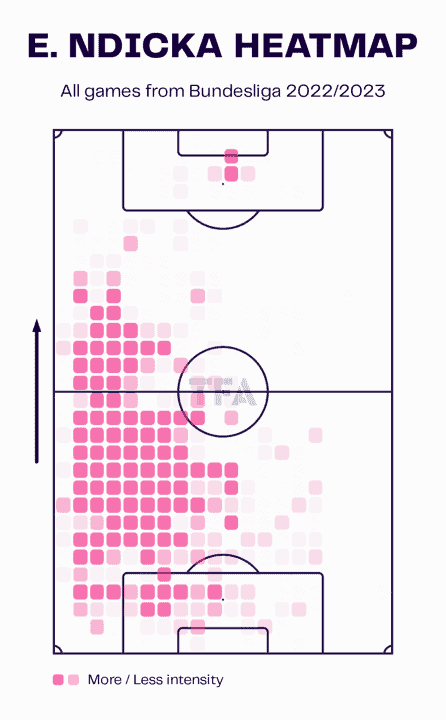
Left-footed Ndicka often played on the left side of a back three for Frankfurt, with the occasional appearance at left wing-back or central defence – something he will be able to transfer to Roma’s tactics as they too deploy a system that utilises three at the back. In line with this, most of his contributions appear in central and left-sided areas, which also comes in handy in possession as he likes to form a good possessional relationship with the left-wing back, as we can see in the image below.
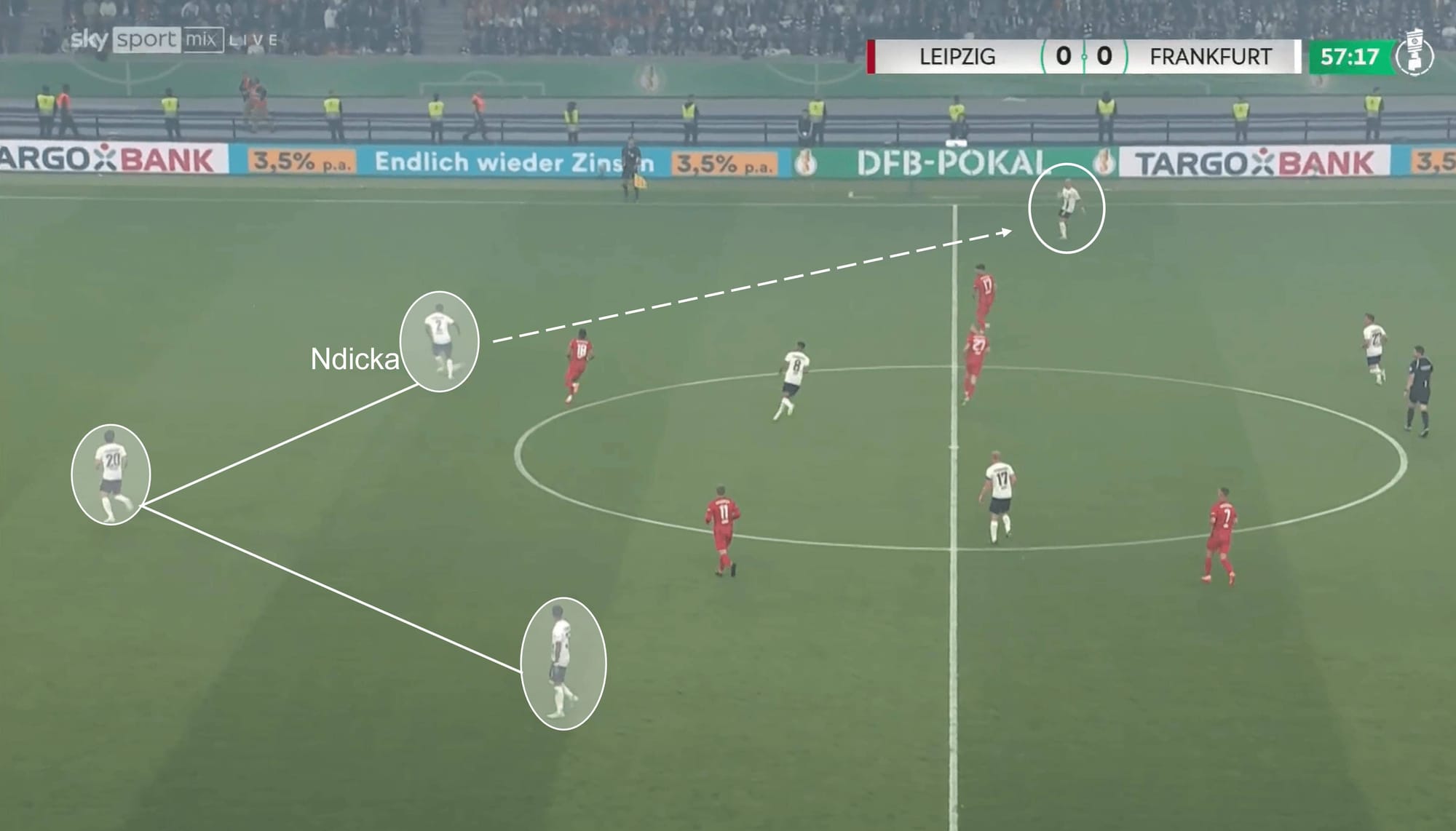
This is a typical view of Ndicka’s positioning in terms of where he is but also his body positioning, shaping up to fizz a pass out to his left-wing back in a wide area. We may see this come into play at Roma as Mourinho’s side do experience games where they dominate possession, but we may see more direct play into the forwards from Ndicka in a Roma shirt.
Standing at 6’3”, Ndicka offers an imposing figure at the back that comes with excellent strength and balance. For his height, he is also impressively agile and quick, often giving him the edge in various scenarios like loose ball duels or reacting in transitions, for example. Of course, his height and athletic build also serve him well in aerial duels, both defensively and offensively.
Defensive attributes
Roma have beaten some big-name clubs to the signing of Ndicka. Reports suggest that the likes of AC Milan, Newcastle, Spurs, and Liverpool were in for the 23-year-old, but the chance to work at the upper end of Italian football under the guidance of one of the game’s great managers in Jose Mourinho was seemingly too good to pass up. In turn, Roma have landed themselves a fantastic modern-day central defender – one who is comfortable in possession, which we’ll get to, but one who is largely reliable in defensive situations.
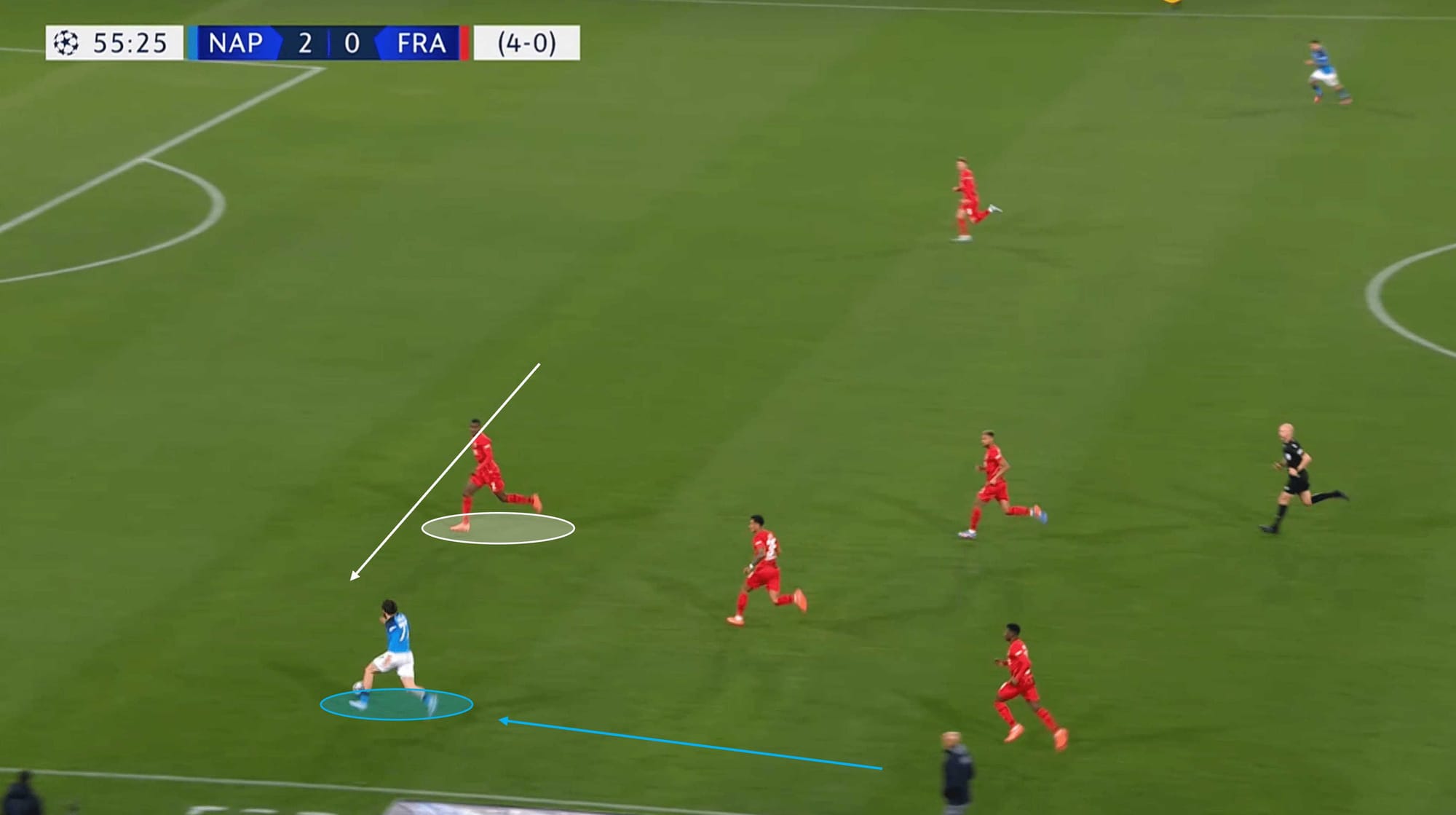
We will start by assessing his ability in 1v1 situations – and of course the surrounding relevant traits. One trait that Ndicka has in bucket loads, and one that will crop up numerous times throughout this scout report, is his ability to read situations and act accordingly. In the image above, the Napoli winger receives the ball in a wide left position before starting to gradually drift inside. Ndicka, initially situated further in the opposite direction to the attack, glides across the pitch to close his opponent down at an angle, forcing the winger’s hand.
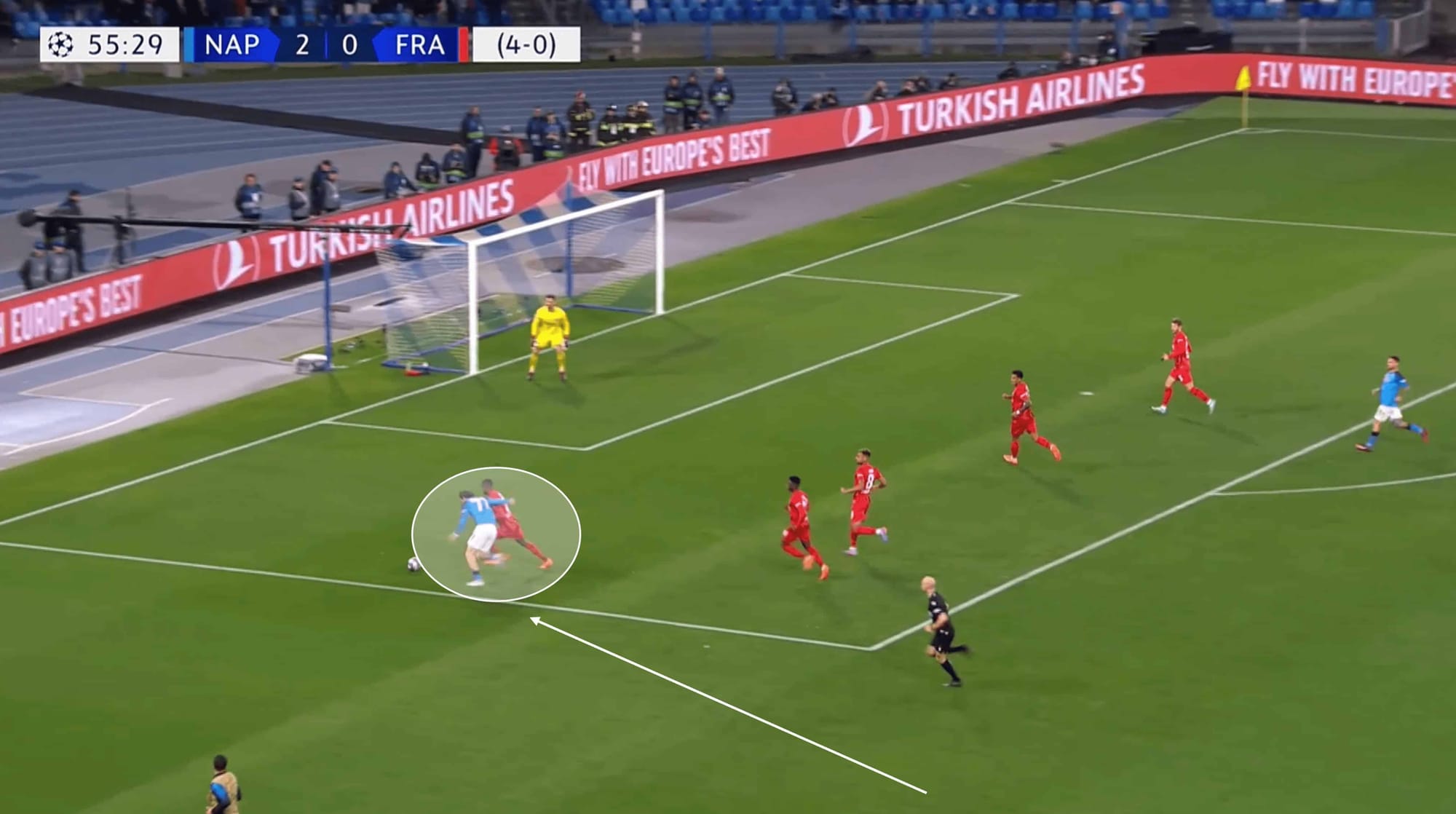
Timing and execution are key in defensive duels, especially in dangerous areas like the one you see above. After coming across the turf to close his opponent down, Ndicka forces the Napoli man wider again, narrowing his options significantly, before putting in a well-timed challenge to not only stop the attack but regain possession for his side.
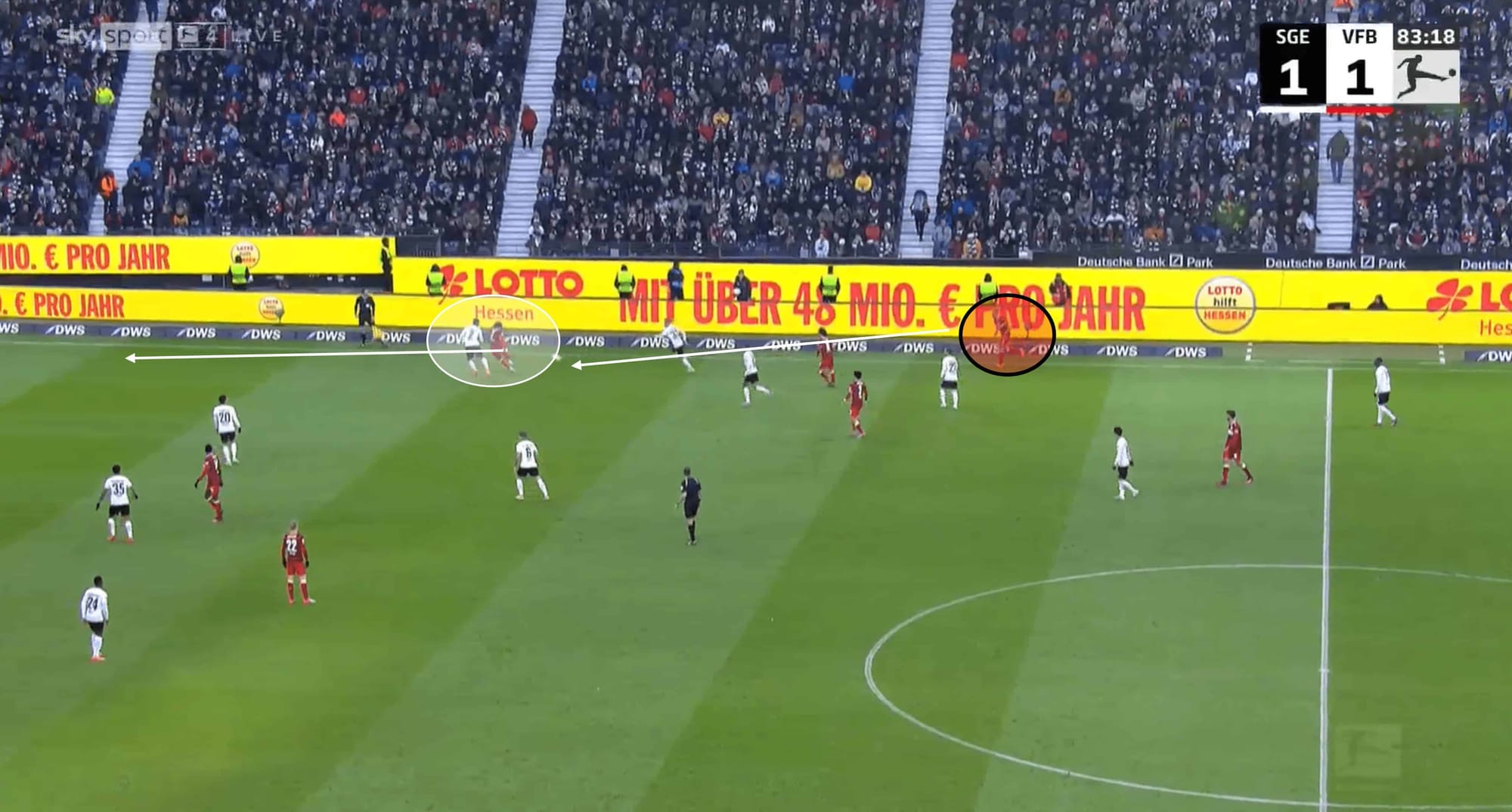
His 1v1 ability has been called into question in the past, as there are some holes in his game. While it is true that pretty much every defender on the planet experiences getting beat in a 1v1 from time to time, there seems to be an emerging pattern for Ndicka. He seems to struggle most when the opponent pins him while receiving the ball, thus presenting the chance to spin away from the defender with the ball and burst into space with it. Luckily for Ndicka, his reactions and general pace help dig him out of situations, but these kinds of mistakes don’t go unpunished for long.
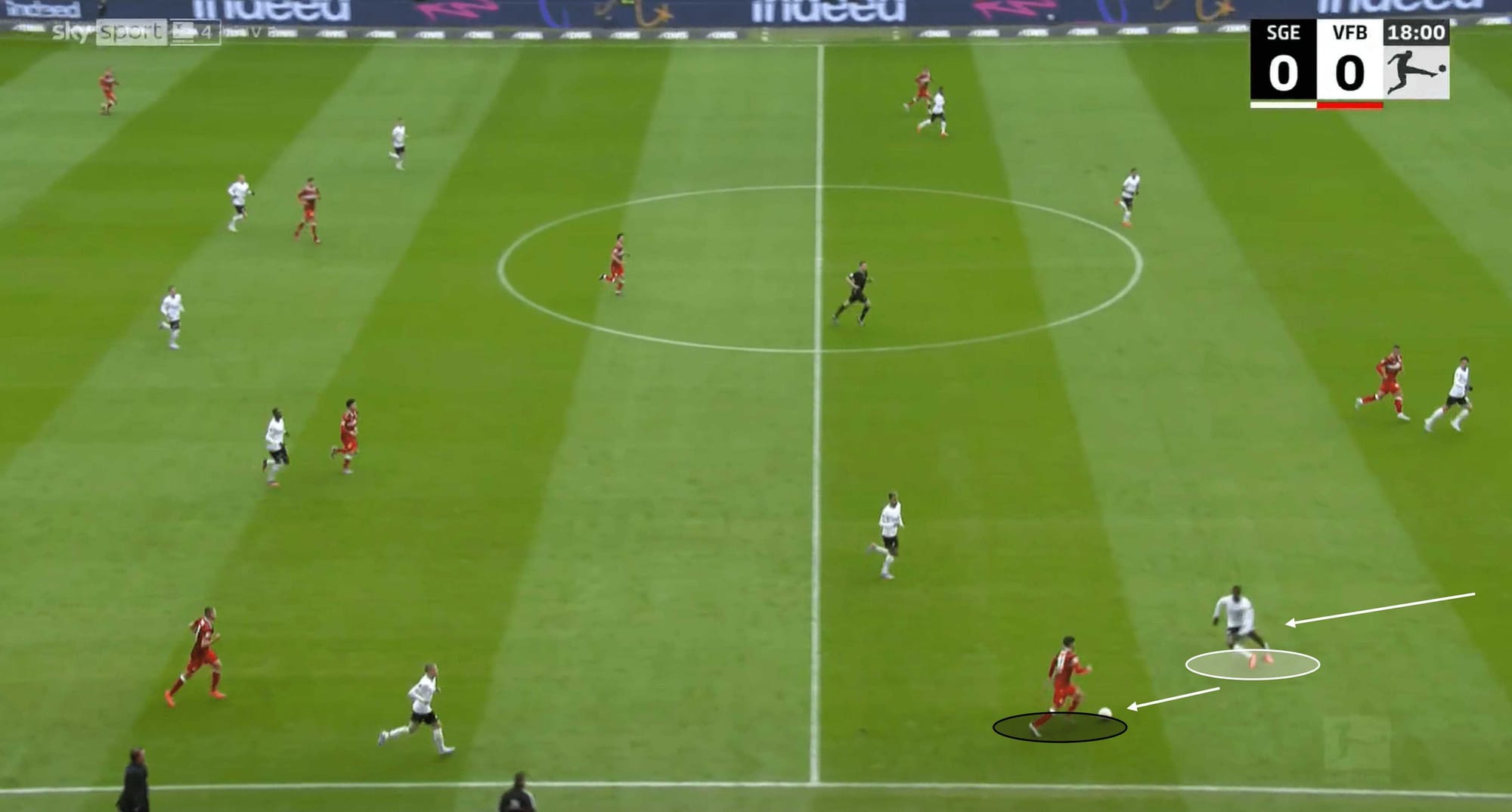
We mentioned earlier about his ability to read situations and act accordingly – he uses this skill, combined with aggression, to rush out to a player who is receiving an awkward pass or takes a heavy touch, or if a player receives the ball with little-to-no support close by. Take the image above, Ndicka left his defensive unit to rush out and meet the opponent with a strong but fair challenge to win the ball back for his team following a potentially dangerous opposition transition. This type of aggressive defending can be extremely difficult for an attacker to combat as it often occurs in situations where the attacker is already facing a struggle, as mentioned earlier.
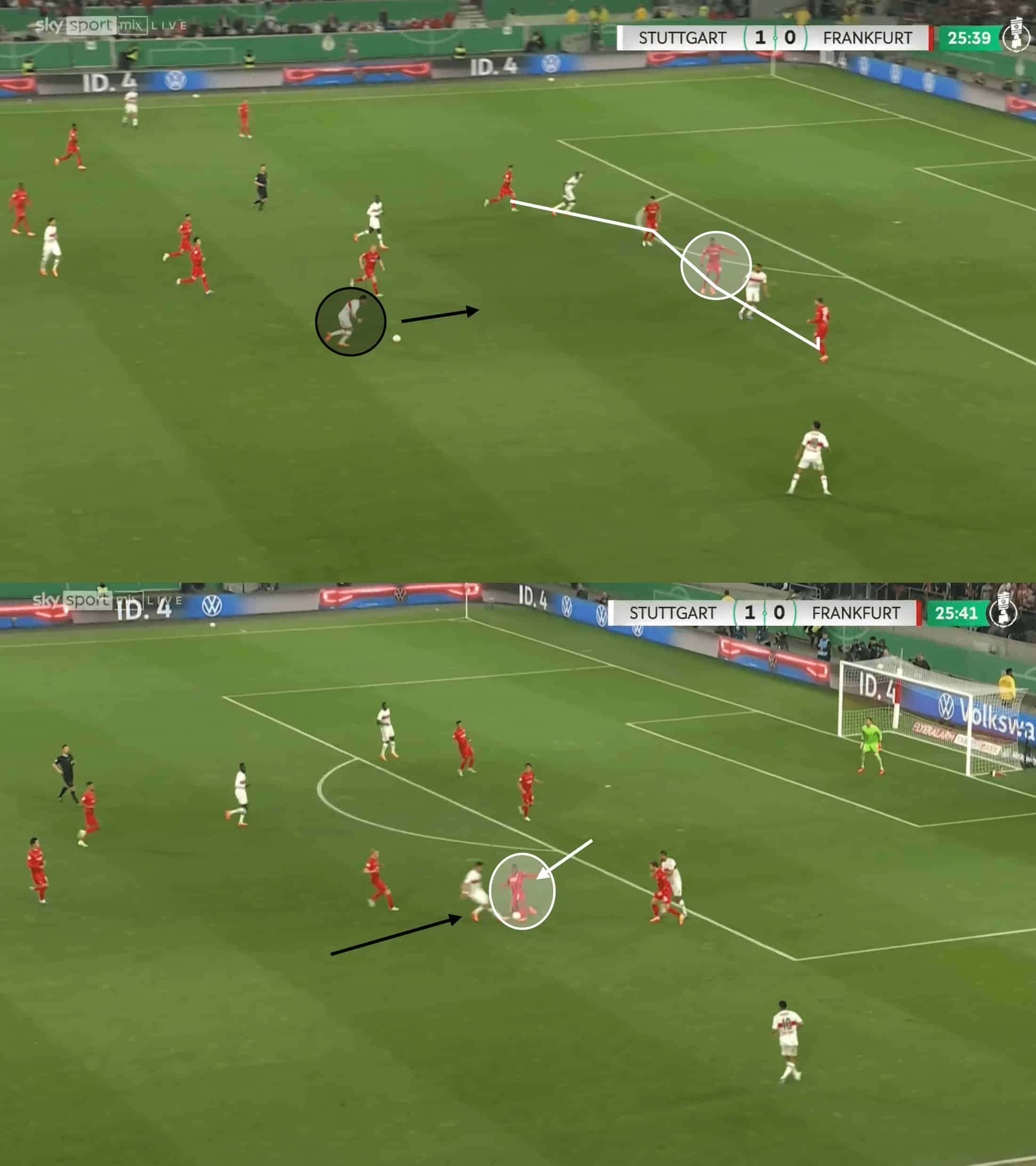
Ndicka is able to apply the same trait in deeper zones as well, not just in midfield areas. The opponent in the image above has his heart set on driving into the final third, with Frankfurt’s defensive line appearing compact and well-organised. As the opponent looks to beat the midfield unit, he takes a very heavy touch, which is just an invitation for someone like Ndicka, who wastes no time in getting out to the ball with another almighty challenge to stop the attack. Again, this action highlights physical attributes like acceleration and strength, technical aspects like tackling, and mental elements like anticipation and decision-making.
Impressive on the ball
As we mentioned earlier, Ndicka is particularly impressive with the ball at his feet. Despite still being a young player, he has already demonstrated dribbling ability, good footwork, and composure on the ball. In this segment, we will dissect those factors and see how they benefit his game.
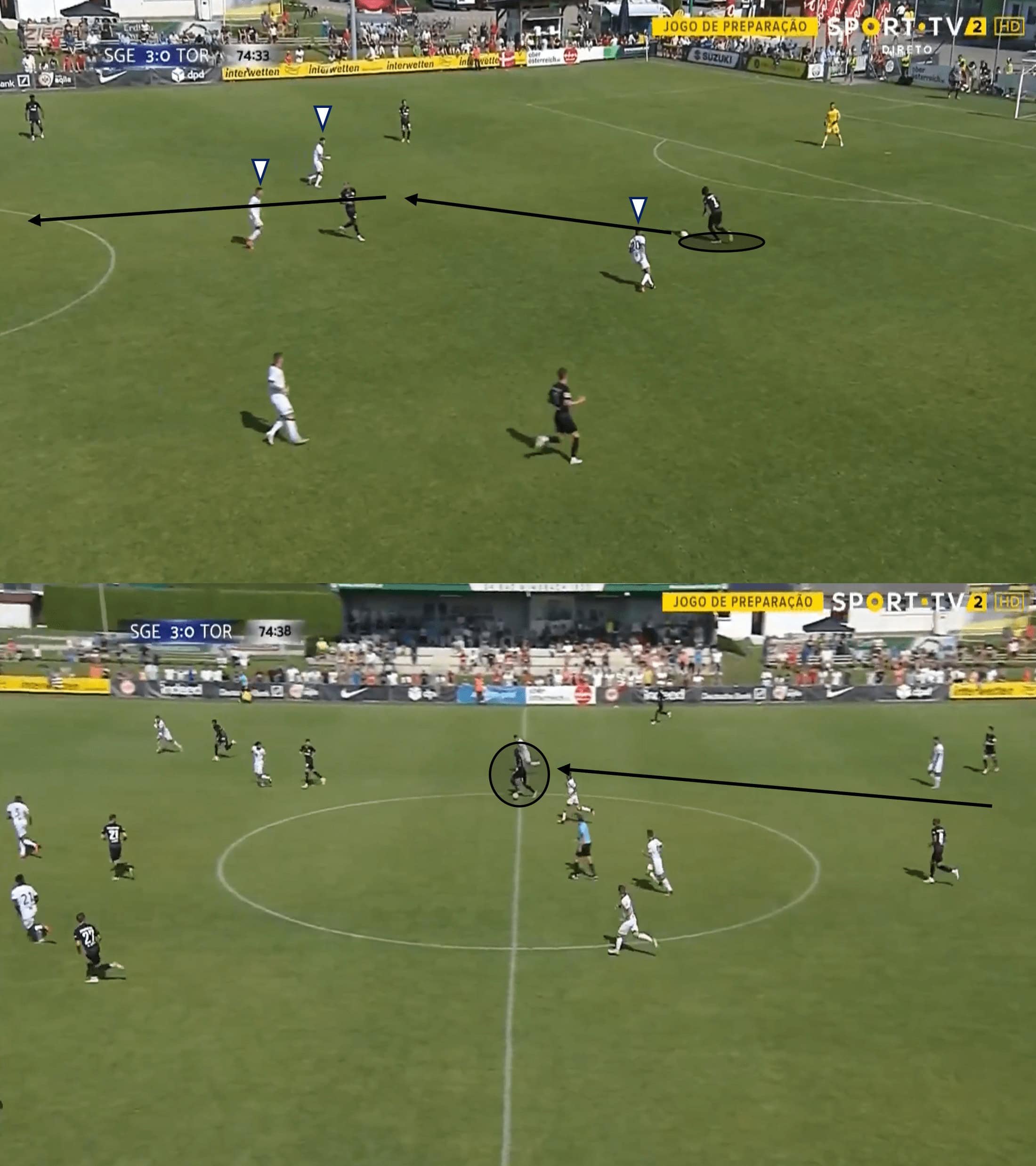
The ability to carry the ball out from the back is a special one for a defender, and very few truly have it in the locker. Ndicka has shown signs of this, with his pace proving effective. His ability to read situations also plays a part as it helps him decide when to try and penetrate higher areas of the pitch. Often when you see a player attempt to bring the ball out from the back at pace, it is done in a clumsy fashion where it looks as though the player could lose the ball at any second, but this isn’t the case with Ndicka. The soon-to-be Roma defender oozes class when running with the ball, and uses the trait with great judgement and consideration.
In the example above, he was graced with the leisure of having no opponent put a challenge in but frankly, if they did, Ndicka has the strength and balance to hold off opponents and continue making progress with the ball.
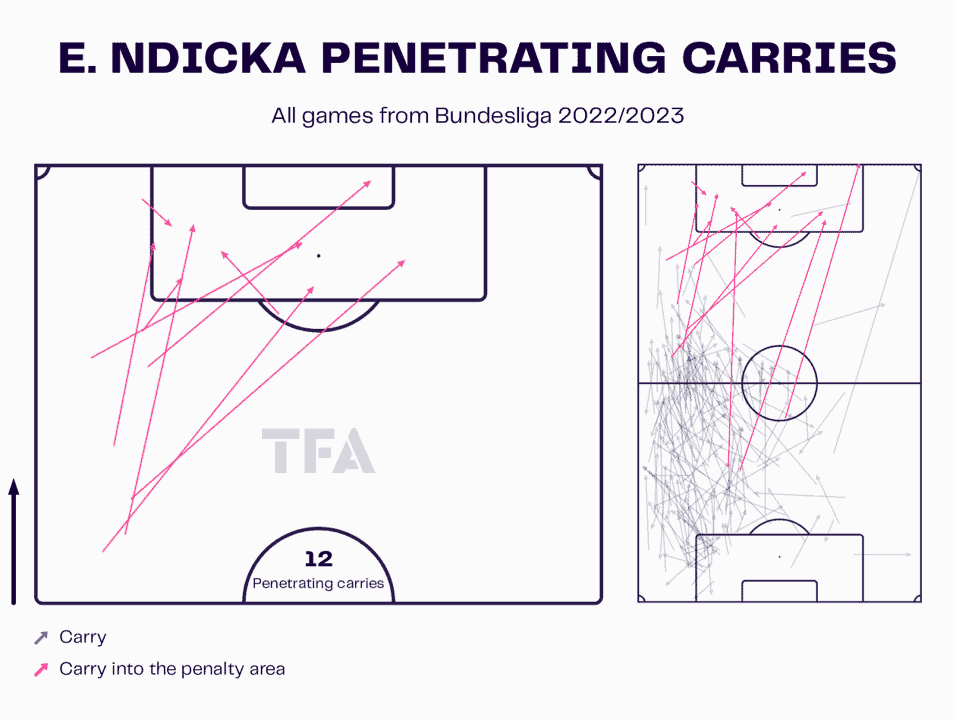
This graphic gives us more of an idea of his dribbling tendencies. Just like we saw with his heatmap, the majority of his involvement comes on the left side of play, showing no fear in running with the ball inside his own half. Interestingly, Ndicka has also proven that he is capable of picking the ball up from deep zones and penetrating not only the final third but the penalty box too.
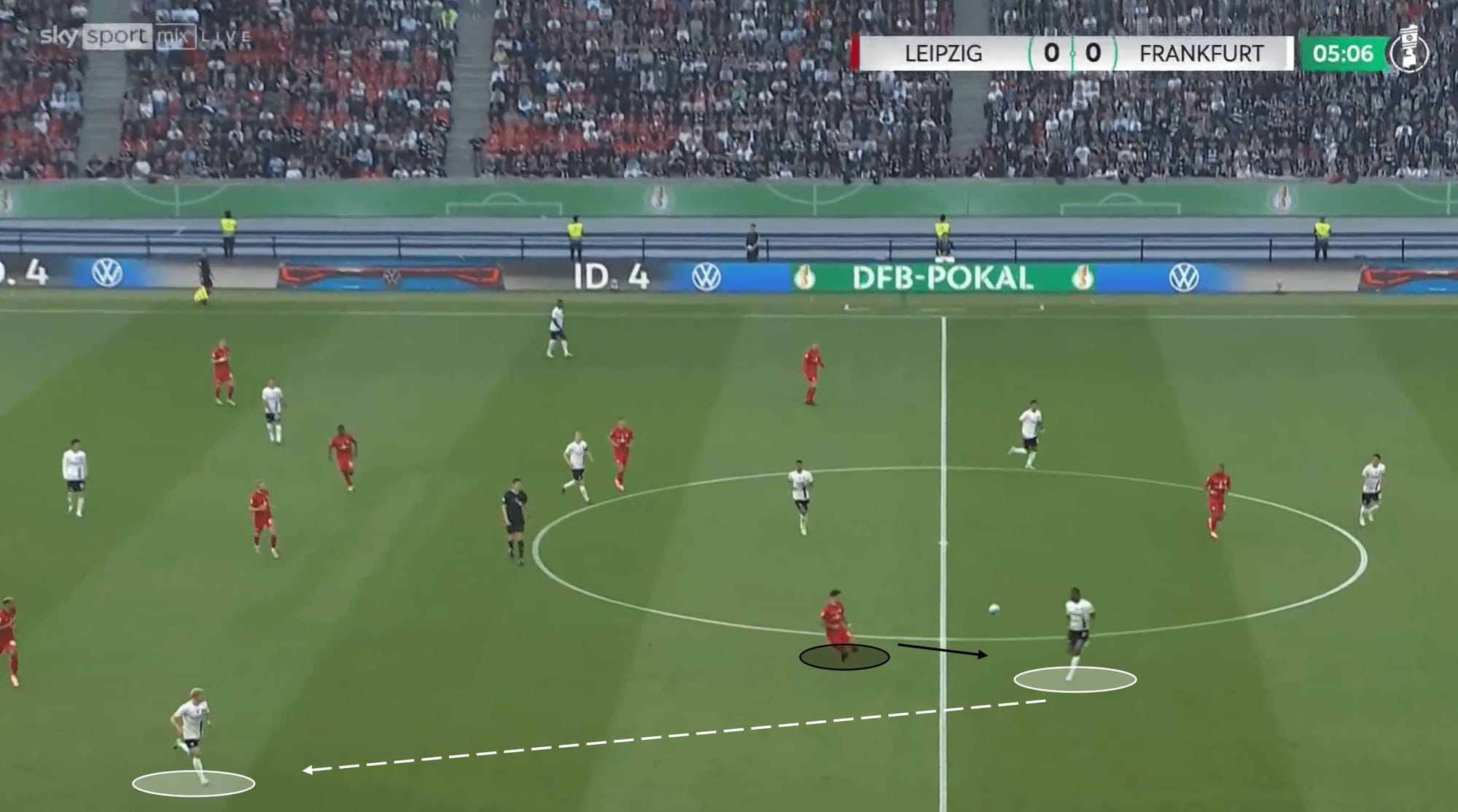
For someone aged 23, Ndicka’s composure on the ball is a joy to watch – he has real potential to enter the category of “Rolls Royce defender” a few years down the line if he continues to develop. Signs of this are apparent when he acts calmly in moments of pressure, like the one above. An awkward pass from a teammate sends the ball bouncing towards Ndicka, with an opponent closing in at speed. Where some would have bowed down to the fear of making a mistake in a dangerous area, Ndicka shows immense composure to meet the ball on the bounce to hit a first-time pass to the oncoming support of the left-wing back.
Some defenders who managed to keep their composure in terms of not making a mistake would still opt for an easy clearance instead of ensuring possession for their side.
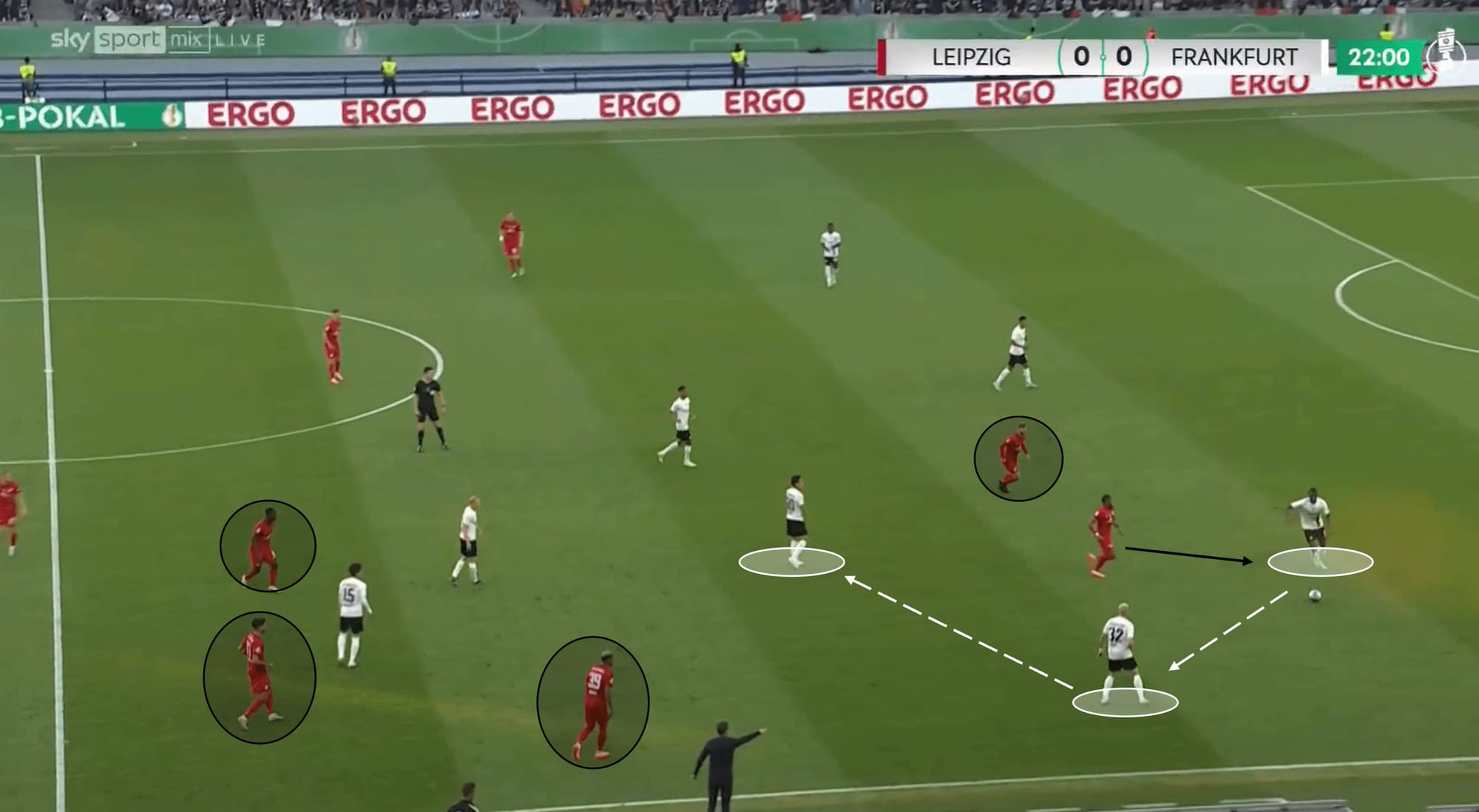
We see a similar example here, but the decision not to just hoof the ball long has some interesting tactical elements in there. Again, Ndicka is forced to act quickly under pressure – get it wrong and he gifts the opponent a chance on goal, so he does well to ignore that first and foremost. Given the significant pressure being applied by the opponent, and the number of bodies high up the pitch, Ndicka would’ve been forgiven for playing a long ball to either clear his lines or to try and hit the space in behind the defence. Instead, he stays with ol’ reliable partnership with his left wing-back, but he feigns the action of a long pass to throw the opponent off, before playing the short pass. From there, his side have the option to play through midfield with the space and numbers they have.
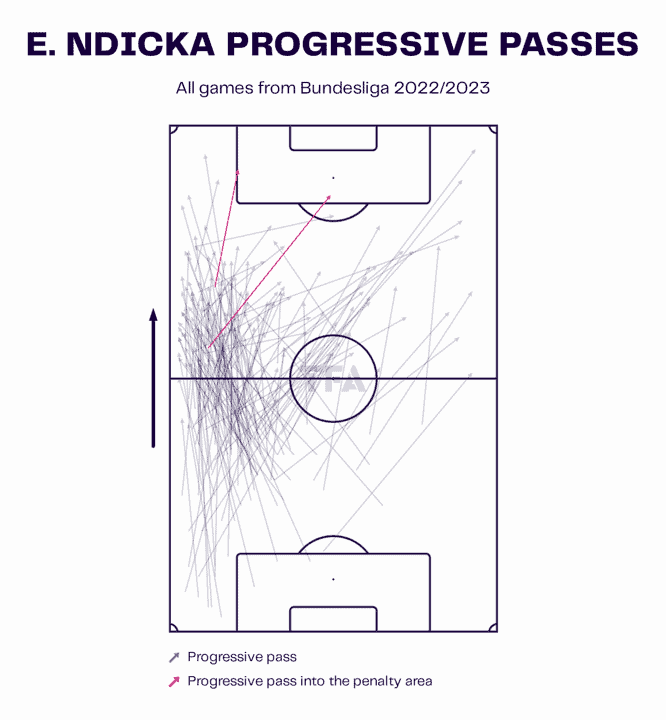
Playing a long pass for the sake of it isn’t in Ndicka’s repertoire, but that doesn’t mean he won’t execute a direct ball if he thinks it is best for his team. Frankfurt often played a 3-4-3 shape or a close variation, so they usually had a strong presence higher up the pitch, with the wide forwards in the front three often tucking in narrow. This would give Ndicka a better chance of picking one of them out with a direct ball, as well as giving them more close support to follow after the pass comes in.
Conclusion
Other clubs will be kicking themselves for missing out on Evan Ndicka, particularly when he was available on a free transfer! Don’t be shocked if he makes a big-money move in the next three-four years, as he really does have the potential to be one of the top defenders in world football. We have mainly seen him compete in a three-at-the-back shape, operating in a team whose tactics reflect that – wide shape, varying passing directness, varying match dominance, but it would be interesting to see how he would fair in a four-at-the-back, where he may have less defensive protection, but still has the chance to link up with midfielders in build-up play.
In terms of a modern-day defender, Ndicka ticks a lot of boxes. While he could work on certain defensive aspects as we spoke about, as well as the general consistency in other small areas of his game, Ndicka is a well-rounded defender, capable of putting a shift in at the back while contributing to attacking phases too.

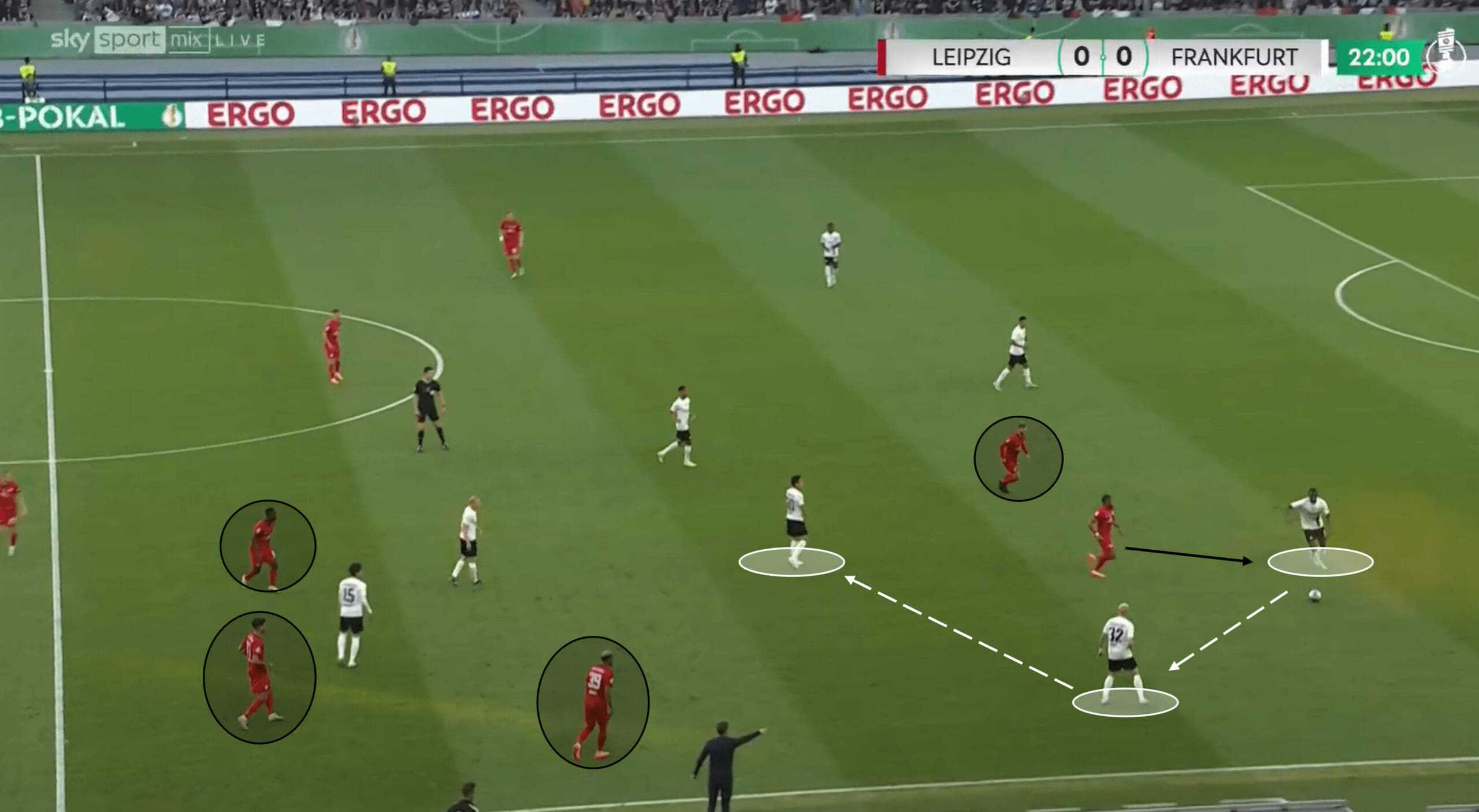




Comments